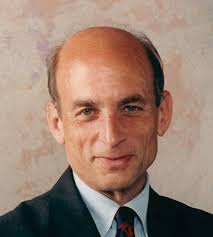For years I’ve been trying to win the New Yorker caption contest. After repeated failure I’ve finally decided my problem is that I’m not a typical New Yorker reader. Which means that I read the Wall Street Journal.
So now the WSJ has a story (who will read it?) on other people who have had a similar problem. And I learn that I have plenty of company as a NYCF (New Yorker Contest Failure): Zach Galifianakis, Michael Bloomberg, Bernard Cornwell, Brad Paisley, Maureen Dowd, Roger Ebert.
The WSJ reports that the New Yorker cartoon editor who runs the contest, Robert Mankoff, “sifts through between 6,000 and 7,000 entries a week. His assistant uses a computer program to weed out entries that are too common or too long and pares the list to under 100. Mr. Mankoff selects three and readers vote on the winner.” None of them me.
How can I persuade the court Mr. Mankoff to give me the prize. Well, a cognitive psychologist and marketing researcher have analyzed entries to one of the contests. There’s a Wired article on the research, and a blog entry by one of the researchers reporting the work in detail and Mankoff’s response.
In general, researchers analyzed the words in a sample of the captions using a psycholinguistic database and a researcher’s judgment of the words’ imagery (how hard to imagine) and abstractness. Based on this and other data they did a statistical and textual analysis, concluding (per the WSJ):
uncommon words were more likely to make the shortlist. Editors also liked captions that were on average one word shorter than others. Captions with fewer punctuation marks fared better than others, as did captions that were harder to visualize.
So cracking the New Yorker contest involves computers. Why not? After all, the same person makes the decision in every contest with the help of a computer. Analyzing that person’s past decisions could be expected to reveal a pattern. Note that the researchers in this case looked at only one contest because that’s all the data they could get from the New Yorker. What if they had all of the entries and all of the winners from all of the contests? I assume they would get a pretty clear pattern.
Naturally (as hinted above) I thought about Law’s Information Revolution. As Kobayashi and I have written, law is basically information. Computers and markets may be able to predict future decisions based on data from judicial opinions, statutes, etc. Unlike the New Yorker contest, legal researchers using Pacer, Westlaw and other tools, have access to all of the relevant inputs. So legal analysis doesn’t have to involve a person spending thousands of hours decoding judicial opinions and other legal materials using magic formulae learned in years of costly law school and practice. If it can work for Jeopardy it can work for law. As we discuss in our paper, regulation may be the main thing preventing law from undergoing and information revolution that has affected every other part of our lives.
I’m not suggesting that computers can replace conventional-type lawyers. The law can change the game at any time, including in response to the computers. (We may have a kind of Heisenberg uncertainty principle of law.) Lawyers can contribute to those game changes by making arguments and human judgments. But future lawyers will have to learn to work alongside computers.




